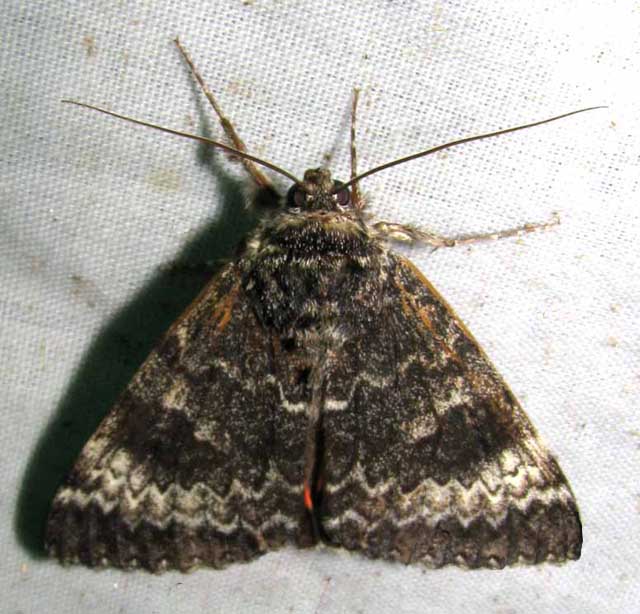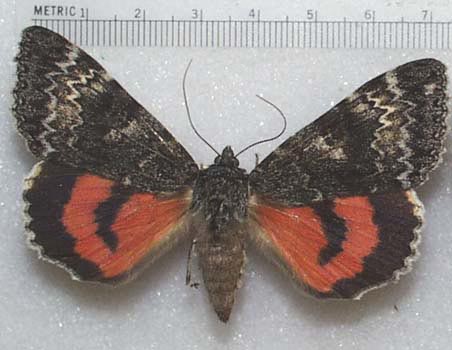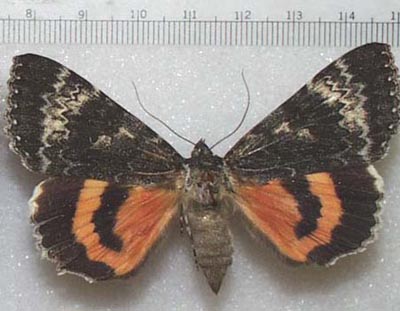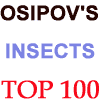Catocala grotiana
Catocala grotiana
kah-TOCK-uh-lahmmgroh-tee-AN-uh
Bailey, 1879

Catocala grotiana, Pinal Parks Rec Area, Gila County, Arizona,
September 9, 2011, courtesy of Evan Rand.
This site has been created by
Bill Oehlke at oehlkew@islandtelecom.com
Comments, suggestions and/or additional information are welcomed by Bill.
| TAXONOMY:
Superfamily: Noctuoidea
Family: Noctuidae
Group: Noctuinina
Subfamily: Catocalinae
Genus: Catocala, Schrank, 1802
| |
MIDI MUSIC
"Moon River"
copyright C. Odenkirk
MIDI CITYON.OFF
<bgsound src="moon.mid" LOOP=FOREVER>
|
DISTRIBUTION:
Grote's Underwing,
Catocala grotiana,
(wingspan: 70-80mm), flies in
Arizona and north through
Utah into
Colorado. It is also seen in Washington and in the western
United States north and east of California: Idaho,
Nevada,
New Mexico,
Oregon and
Wyoming.
Scott Shaw reports grotiana is common
"on Pole Mountain, in the Medicine
Bow Forest, Wyoming, about 10 miles
east of Laramie near I-80 in the mountain willow bogs."

Catocala grotiana, Arizona, courtesy of Bruce Walsh.
The white outlines outside the postmedial and
inside the
subterminal lines make this species stand out.
The hindwing inner black band is even and relatively thin and
terminates well
before the inner margin.
The fringe is heavily checked and charcoal grey along the inner
margin. Bruce Walsh image.
Hindwings can be orange or red. |  |
FLIGHT TIMES AND PREFERRED FOOD PLANTS:
Catocala grotiana are usually on the wing in August and
September.
The Catocala grotiana caterpillar feeds on poplar and willow.
ECLOSION:
Adults eclose from pupae at soil surface.
SCENTING AND MATING:
Catocala grotiana females
emit an airbourne pheromone and males use their antennae to track the
scent plume.

Greer, White Mts, 8200'. Apache Co, AZ.
Aug 2, 1997. Kelly Richers, collector, at uv trap
EGGS, CATERPILLARS, COCOONS, AND PUPAE:
Eggs are deposited on
tree bark in the fall and hatch the following spring.
Larval Food Plants
Listed below are primary food plant(s) and alternate food plants.
It is hoped that this alphabetical listing followed by the common
name of the foodplant will prove useful. The list is not exhaustive,
although some species seem very host specific.
Experimenting with closely related foodplants is worthwhile.
Populus......
Salix
|
Poplar
Willow
|
Return to Main Index
This page is brought to you by Bill Oehlke and the
WLSS. Pages are on space rented from Bizland. If you would like to become a "Patron of the Sphingidae/Catocala Sites",
contact Bill.
Please send sightings/images to Bill. I will do my best to respond to requests for identification help.
Enjoy one of nature's wonderments: Live Saturniidae (Giant Silkmoth) cocoons.

|

To show appreciation for this site, click on the flashing
butterfly to the left, a link
to many worldwide insect sites. |





